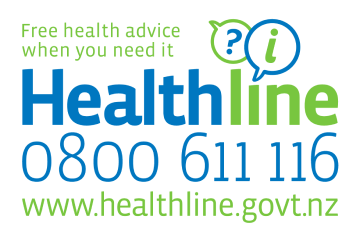Water Safety
Water Safety
Keep your child safe near water. Never leave children, especially those under 5, unsupervised near any water, including baths, buckets and water troughs.
Key points about water safety
- drowning is a leading cause of death from injury in young people
- always keep within arm's reach of your child when they are in and around water
- never leave children, especially those under 5 years of age, unsupervised near water
- be aware of unfenced landscape water features, storm water catchment ponds and urban streams near homes
Melody's story
Watch a Safekids Aotearoa video about Melody's story.
In 2016, Eugene and Chereen's world was shattered when, tragically, their beloved 3-year-old granddaughter Melody drowned at a public pool. This is their story - bravely shared to honour Melody's legacy and to raise awareness for water safety.
Find out more about Melody's story at the Safekids Aotearoa website.
Always watch young children near water
It is important young children are always supervised near water. Never leave them unsupervised.
There are some key things to remember:
Keep them close
Always keep within an arm's reach of your child when they are in and around water.
Watch them - always
Never leave children, especially those under 5 years of age, unsupervised near water, including baths, buckets, ponds, streams and water troughs.
Never leave a young child alone in a bath
All children under the age of 3 years should be constantly supervised in the bath by an adult.
Bath aids, bath seats or young siblings are not a replacement for adult supervision. If you need to leave the room, take your child with you.
Never leave an unwell child unsupervised in the bath
Be aware of unfenced water features
Be aware of unfenced landscape water features, storm water catchment ponds and urban streams near homes.
It is also important to always empty baths and paddling pools after use.
Check out Water Safety NZ’s top tips to keep children and babies water safe.
Make sure pools are fenced
Always use pool fencing (at least 1.2m high) that completely surrounds your pool, including spa pools. Check pool fences and gates regularly.
Other things to consider:
- check your pool gates open outward away from the pool, swing shut and automatically latch, every time
- check pool fences for gaps to crawl under, or for loose bars or planks
- never prop open a pool gate or have anything nearby that might block the gate latch (such as clothes or towels)
- make sure to remove any chairs or toys that children might use to climb over a pool fence
- if fences are modified or houses and gardens redesigned, always check the pool fence still functions to keep children safe
- be especially careful with children if you are visiting someone with a pool - if you are in a group, always make sure it is clear who has the job of watching the children; otherwise everyone may assume someone else is watching them
See the pool area safety checklist at the Auckland Council | Te Kaunihera o Tāmaki Makaurau website.
Teach tamariki water confidence
It is important to introduce children to water in a positive, caring manner. Sharing bath time and visiting your local pool are positive steps to developing water confidence and safety skills in your child.
Water safety information for children - by age
While babies and toddlers are particularly at risk near water, there is still a risk to all young children. Young tamariki are curious, fast and attracted to water but can also slip and drown very quickly.
How children in Aotearoa New Zealand drown:
- babies mostly drown in buckets and baths
- pre-schoolers mostly drown in home swimming pools and unfenced water hazards nearby homes
- teens mostly drown in natural bodies of water, such as rivers and the sea
Check out Safekids’ top safety tips for children, by age group (PDF, 131KB).
What to do in a rip
It is important to teach children from a young age how to be safe around water. One of the things you can teach them is to follow Surf Lifesaving NZ’s 3 Rs rip survival plan if they are ever caught in a rip.
3 Rs rip survival plan: relax, raise, ride.
- relax and float so you don’t run out of energy
- raise your hand to signal for help
- ride the rip until it stops and you can swim back to shore or until help arrives
Check out Surf Lifesaving NZ’s beach basics.
First aid
Your first priority is to get a drowning child out of the water as quickly as possible. If they aren't breathing, place them on their back on a firm surface and start CPR.
This page last reviewed 28 September 2022.
Do you have any feedback for KidsHealth?
If you have any feedback about the KidsHealth website, or have a suggestion for new content, please get in touch with us.
Email us now